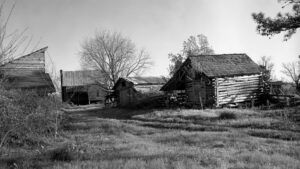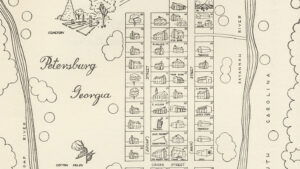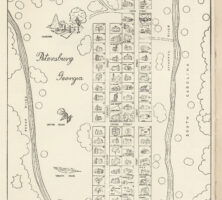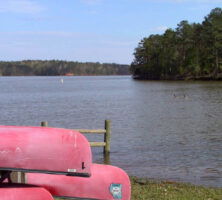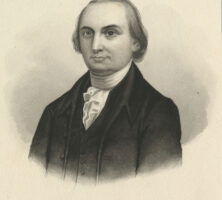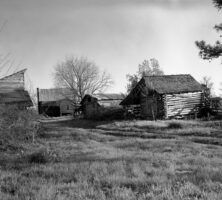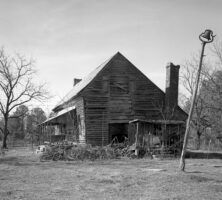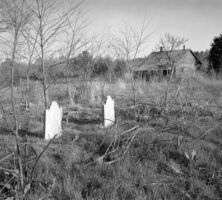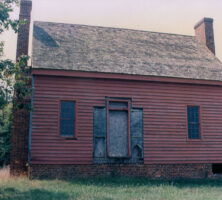The New Georgia Encyclopedia is supported by funding from A More Perfect Union, a special initiative of the National Endowment for the Humanities.
This town of Petersburg, once the third largest in Georgia, stood in the forks of the Broad and Savannah rivers. Established in 1786, the town was submerged by the man-made Clarks Hill Lake in the early 1950s. This map, compiled by historian E. Merton Coulter from data in the Elbert County deed records, approximates the layout of the town during its heyday in the late eighteenth and early nineteenth centuries.
From Old Petersburg and the Broad River Valley of Georgia, by E. M. Coulter
The New Georgia Encyclopedia does not hold the copyright for this media resource and can neither grant nor deny permission to republish or reproduce the image online or in print. All requests for permission to publish or reproduce the resource must be submitted to the rights holder.
One of two major recreational parks in Elbert County, Bobby Brown State Park marks the site of the old town of Petersburg, which is under the waters of Clarks Hill Lake.
Photograph by Darby Carl Sanders, New Georgia Encyclopedia
The New Georgia Encyclopedia does not hold the copyright for this media resource and can neither grant nor deny permission to republish or reproduce the image online or in print. All requests for permission to publish or reproduce the resource must be submitted to the rights holder.
In early 1794 Elijah Clarke, in an attempt to claim Creek lands west of the Oconee River, established as many as six settlements in areas of present-day Greene, Morgan, Putnam, and Baldwin counties. The state militia intervened in September 1794, and the settlements, which came to be known as the Trans-Oconee Republic, were disbanded peacefully.
The New Georgia Encyclopedia does not hold the copyright for this media resource and can neither grant nor deny permission to republish or reproduce the image online or in print. Requests for permission to publish or reproduce the resource should be submitted to the Hargrett Manuscript and Rare Book Library at the University of Georgia.
In 1794 George Walton, one of the Georgia signers of the Declaration of Independence, denounced the actions of Elijah Clarke, who was attempting to illegally settle Creek lands west of the Oconee River. Walton's intervention initiated a peaceful resolution between Clarke and the state.
The New Georgia Encyclopedia does not hold the copyright for this media resource and can neither grant nor deny permission to republish or reproduce the image online or in print. Requests for permission to publish or reproduce the resource should be submitted to the Hargrett Manuscript and Rare Book Library at the University of Georgia.
Dilapidated houses from the Goose Pond community, which was founded in the late eighteenth century, still remained when this photo was taken circa 1964. Today the post office is the only extant building from the original community, located in present-day Oglethorpe County.
Courtesy of Hargrett Rare Book and Manuscript Library, University of Georgia Libraries, Andrew Horace Sparks Papers.
The New Georgia Encyclopedia does not hold the copyright for this media resource and can neither grant nor deny permission to republish or reproduce the image online or in print. Requests for permission to publish or reproduce the resource should be submitted to the Hargrett Manuscript and Rare Book Library at the University of Georgia.
The McGeehee family was one of many who emigrated from Virginia to Goose Pond in northeast Georgia in the late eighteenth century.
Courtesy of Hargrett Rare Book and Manuscript Library, University of Georgia Libraries, Andrew Horace Sparks Papers.
The New Georgia Encyclopedia does not hold the copyright for this media resource and can neither grant nor deny permission to republish or reproduce the image online or in print. Requests for permission to publish or reproduce the resource should be submitted to the Hargrett Manuscript and Rare Book Library at the University of Georgia.
The Goose Pond community of present-day Oglethorpe County was established in the late 1700s on land previously occupied by Creek and Cherokee Indians. Two headstones appear in the foreground of the photograph, taken circa 1964.
Courtesy of Hargrett Rare Book and Manuscript Library, University of Georgia Libraries, Andrew Horace Sparks Papers.
The New Georgia Encyclopedia does not hold the copyright for this media resource and can neither grant nor deny permission to republish or reproduce the image online or in print. Requests for permission to publish or reproduce the resource should be submitted to the Hargrett Manuscript and Rare Book Library at the University of Georgia.
Georgia governor George R. Gilmer's childhood home originally stood in the Goose Pond community of Oglethorpe County. The house is now located at the Calloway Plantation in Wilkes County.
Photograph by Carol Ebel
The New Georgia Encyclopedia does not hold the copyright for this media resource and can neither grant nor deny permission to republish or reproduce the image online or in print. All requests for permission to publish or reproduce the resource must be submitted to the rights holder.
